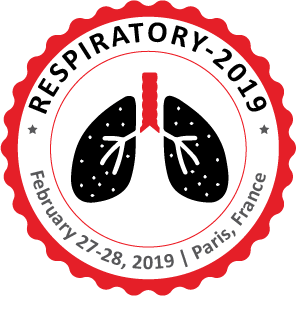
Alexander D Verin
Augusta University, USA
Title: Extracellular purines in acute lung injury preservation
Biography
Biography: Alexander D Verin
Abstract
Endothelial cells (EC) form a semi-permeable barrier between the interior space of blood vessels and the underlying tissues. In acute lung injury (ALI), the EC barrier is weakened leading to increased permeability. The mechanisms involved in the preservation of barrier integrity are largely unknown. Recently, attention has been given to the therapeutic potential of purinergic agonists in the treatment of cardiovascular and pulmonary diseases. We have demonstrated that extracellular ATP (stable analog, ATPγS) and its degradation product, adenosine can strengthen EC barrier via activation of P2Y and P1 type 2A receptors, respectively. We also demonstrated that, ATPγS and adenosine induce activation of small GTPase, Rac 1 and this correlates with a significant attenuation of lipopolysaccharide (LPS)-induced EC permeability increase. Conversely, introduction of active Rac1 into EC strengthens EC barrier. In parallel, extracellular purines induce activation of protein kinase A (PKA)/myosin light chain (MLC) phosphatase (MLCP) cascade and this also correlates with attenuation of LPS-induced EC permeability. Therefore, the ability of ATP and adenosine to strengthen EC barrier appears to be dependent on Rac1 and MLCP activation. Further, introduction of active MLCP subunits into the lung endothelium reduces LPS-induced lung inflammation strongly supporting the positive role of MLCP activity in EC barrier preservation against ALI in murine model. Collectively, our data strongly suggest that EC barrier preservation induced by extracellular purines is dependent upon activation of specific purinergic receptor/G-protein complexes. Further, purine-induced EC barrier preservation requires the coordinated activation of Rac1 and PKA/MLCP cascade leading to EC cytoskeletal changes.

